Tahini Miso Salmon is an easy peasy, healthy oven-baked salmon recipe that’s packed with flavour! The tahini miso sauce works as both a marinade and a dressing for the salmon. This recipe is gluten free, dairy free and nut free.
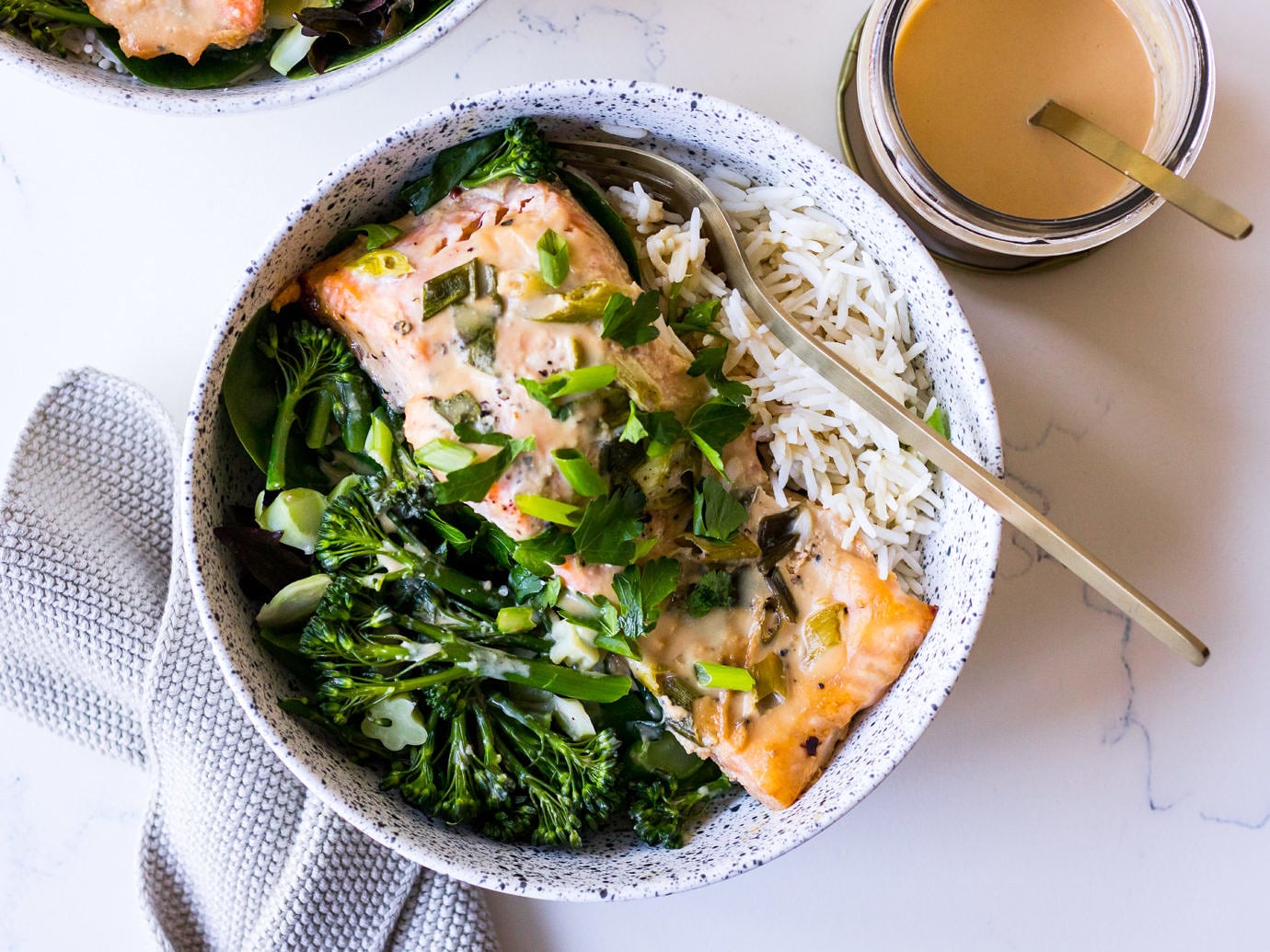
Tahini Miso Salmon is something I make on the regular as I almost always have a jar of tahini in the cupboard + some miso paste in the fridge. My love for both ingredients runs very, very deep. So why not combine the two! Tahini adds the perfect creamy balance to the salty miso.
What I love about this miso salmon recipe
- The simplicity of it all. You make one little sauce and it marinades the fish as well as making a dressing for serving. Add rice and greens and dinner is done!
- Super nutritious and packed with omega 3 fatty acids. Oily fish like salmon are the richest source of anti-inflammatory omega 3 fats (EPA and DHA). We need to get omega 3 from our diet, it’s considered an ‘essential fatty acid’.
- Fuss free, low mess cooking. The salmon is oven baked so it’s very hands-off and there’s minimal mess to clean up, as the recipe also uses baking paper which protects the baking tray!
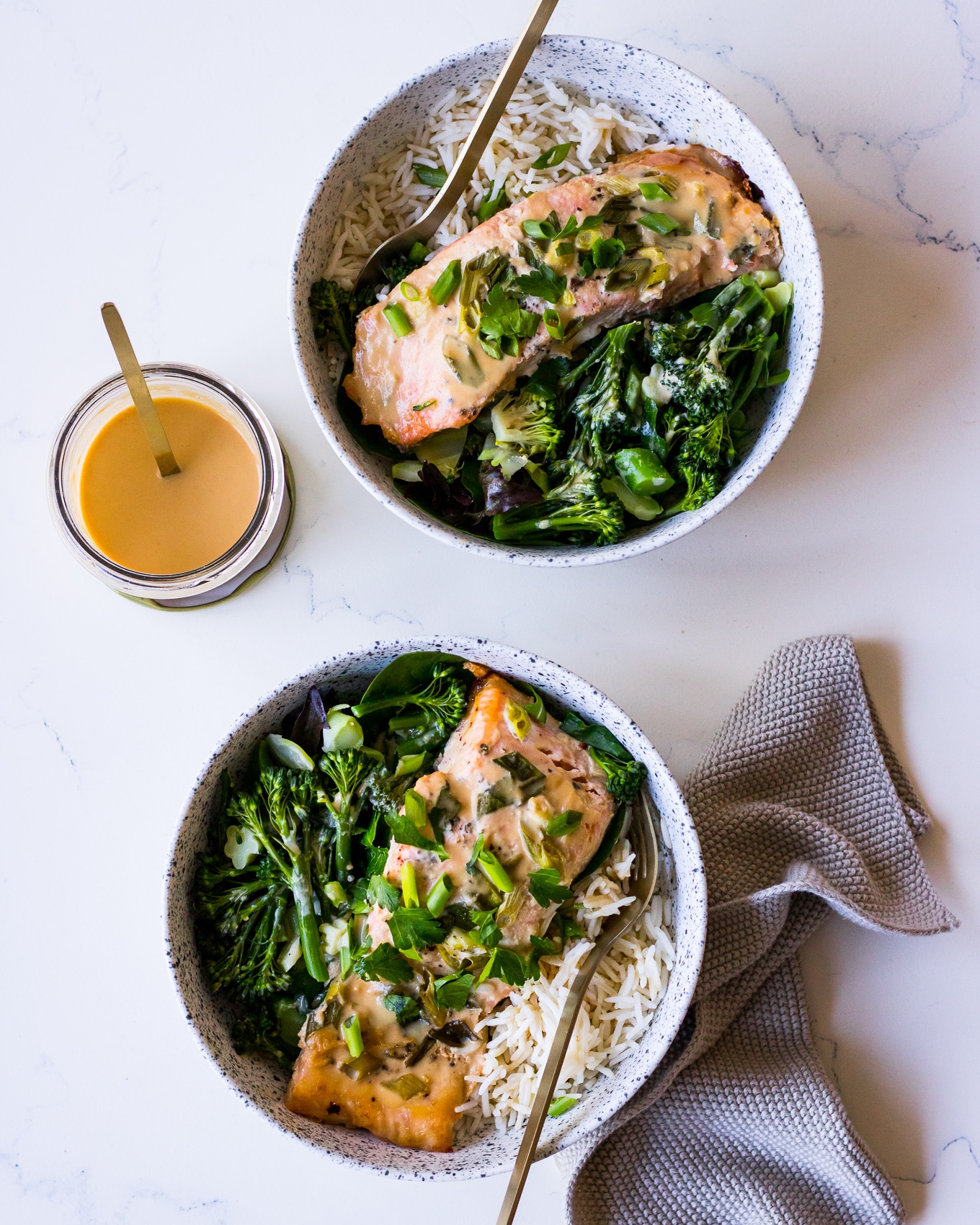
What you need to make tahini miso salmon
- Salmon fillets – you can use skin-on or skin-off for this recipe. The skin won’t get super crispy in this recipe as the salmon is cooked en papillote.
- Miso paste – I recommend white miso (shiro miso). Please see the very lengthy notes below on miso if you need more information!
- Tahini – use hulled tahini for this recipe, it has a smoother and more creamy flavour which is perfect for making a sauce.
- Apple cider vinegar – the tart taste of apple cider vinegar is just the right contrast to the sweet and creamy notes of this salmon recipe.
- Maple syrup – you can use maple syrup or honey in this recipe.
- Spring onion – these are also known as scallion or green onions.
- Rice and steamed green veggies are the sides that I recommend for tahini miso salmon.
Please see the recipe card below for exact quantities.
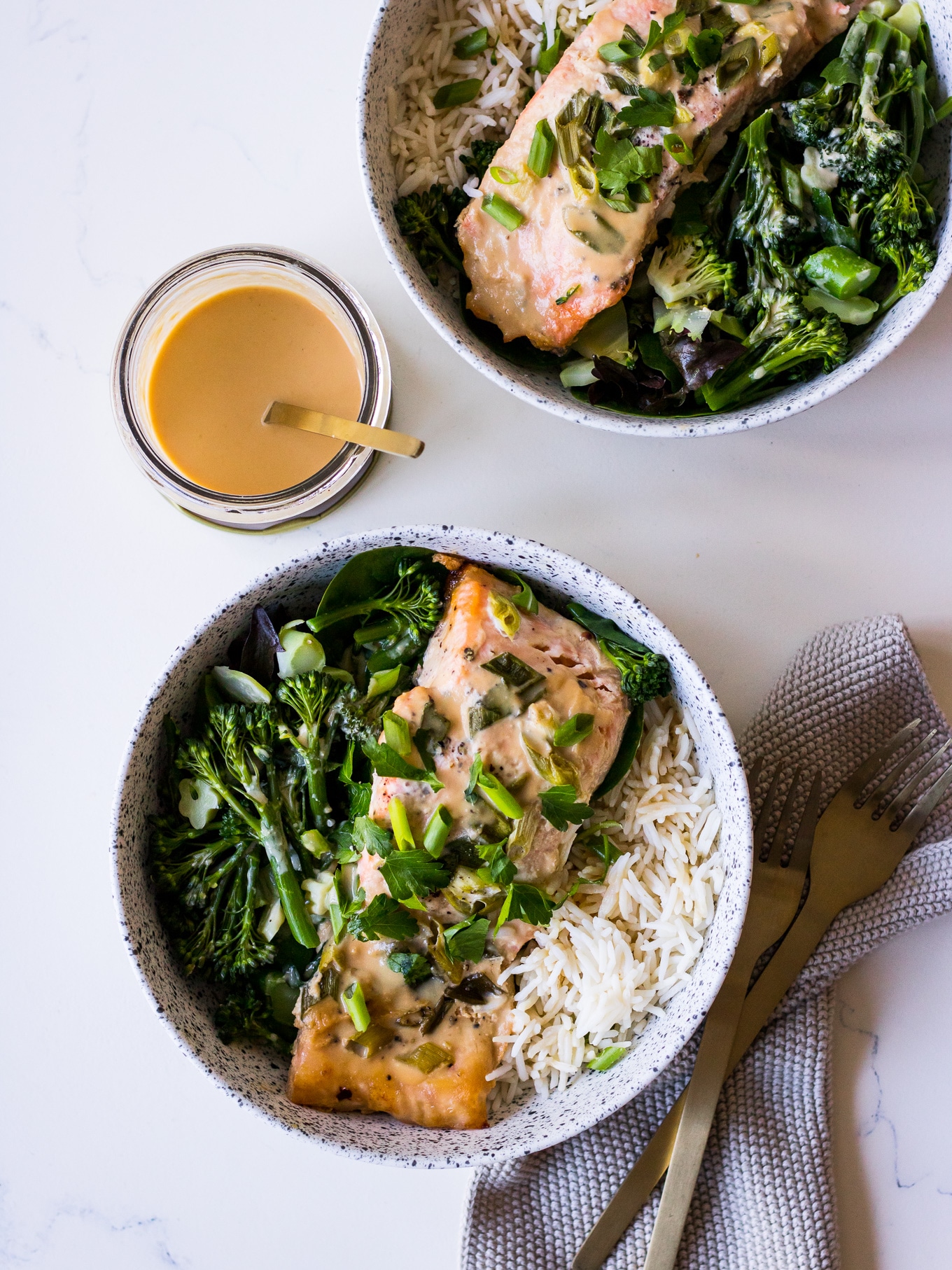
How to cook salmon en papillote
In this recipe the salmon fillets are cooked en papillote or “in a paper bag“. To do this, you very simply make a little sealed ‘envelope’ for the salmon out of baking paper and the fish is steamed inside, infusing the flavour of the marinade.
Cooking the salmon en papillote helps make sure you get a juicy, flaky and tender result, and reduces the risk of over-cooking and drying out the salmon that can happen when you oven bake it (and hmm maybe forget about it in there, as sometimes happens to me!).
To make sure the salmon is sealed securely I will often use a layer of aluminium foil plus a layer of baking paper, with the baking paper on the inside. The foil is sturdy and keeps the parcel together in the oven more easily.

What miso paste do you need for salmon?
I am not an expert in miso, so the information in this blog post is basic and I apologise if I get it a bit wrong. If you’re buying your miso paste from a supermarket or health food store, chances are you’re probably not going to have hundreds to choose from so this should be enough to guide you!
Miso paste is made from fermented soybeans and salt – the beans are fermented using koji (Aspergillus oryzae). Yes, miso is a source of probiotics!
Most often the soybeans are fermented with a grain as well, usually rice though other grains can be used. The main types of miso are:
- white miso or shiro miso: this is the most gentle and sweeter tasting of the miso pastes;
- red miso or aka miso: this is the most intense, rich and salty tasting miso paste with a darker colour; and
- yellow miso: this is a blend of shiro + aka miso.
You may also find a few other variants on the shelves like genmai miso (made with brown rice instead of white rice), hatcho miso (uses only soybeans and no grains) and mugi miso (uses barley not rice). Phew! I’m sure I’ve missed a few but there’s a quick rundown.
This recipe uses white miso, as the more delicate and slightly sweet flavour is perfect for fish! Personally, I also find that white miso is the most versatile one to have it your kitchen. Because it is mild it can go into stir fries, soup broth, salad dressings and even desserts without overpowering everything but adding lots of umami flavour.
Just one last thing on miso – make sure your miso is definitely GLUTEN FREE if you can’t have gluten! Some miso pastes do contain grains other than rice. Read the label carefully.
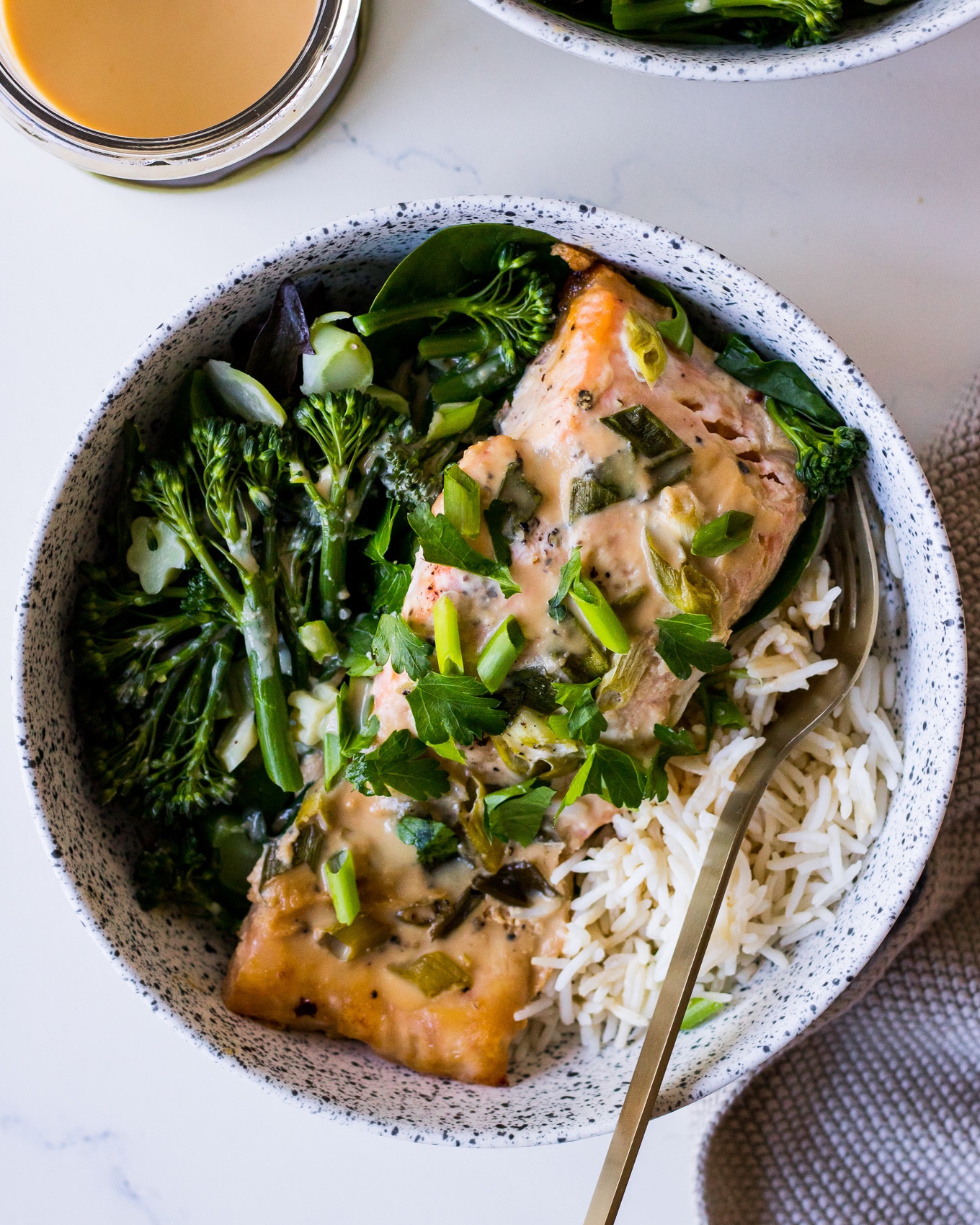
Sorry about the long miso ramble, but I hope you find that little bit of kitchen information helpful for other cooking adventures too!
Finally, please note, the size and thickness of the salmon fillets affects cooking time. I tend to use thick salmon fillets (around 1 inch thick or evenly slightly more at their thickest) weighing 175-200 grams each. If your fillets are small and/or thin cooking time may only be 15-20 minutes.
If you make this baked salmon let me know, leave a comment below or take a snap and tag me on Instagram 🙂
p.s. love baked salmon? Make sure you also check out my Curry Spice Baked Salmon!
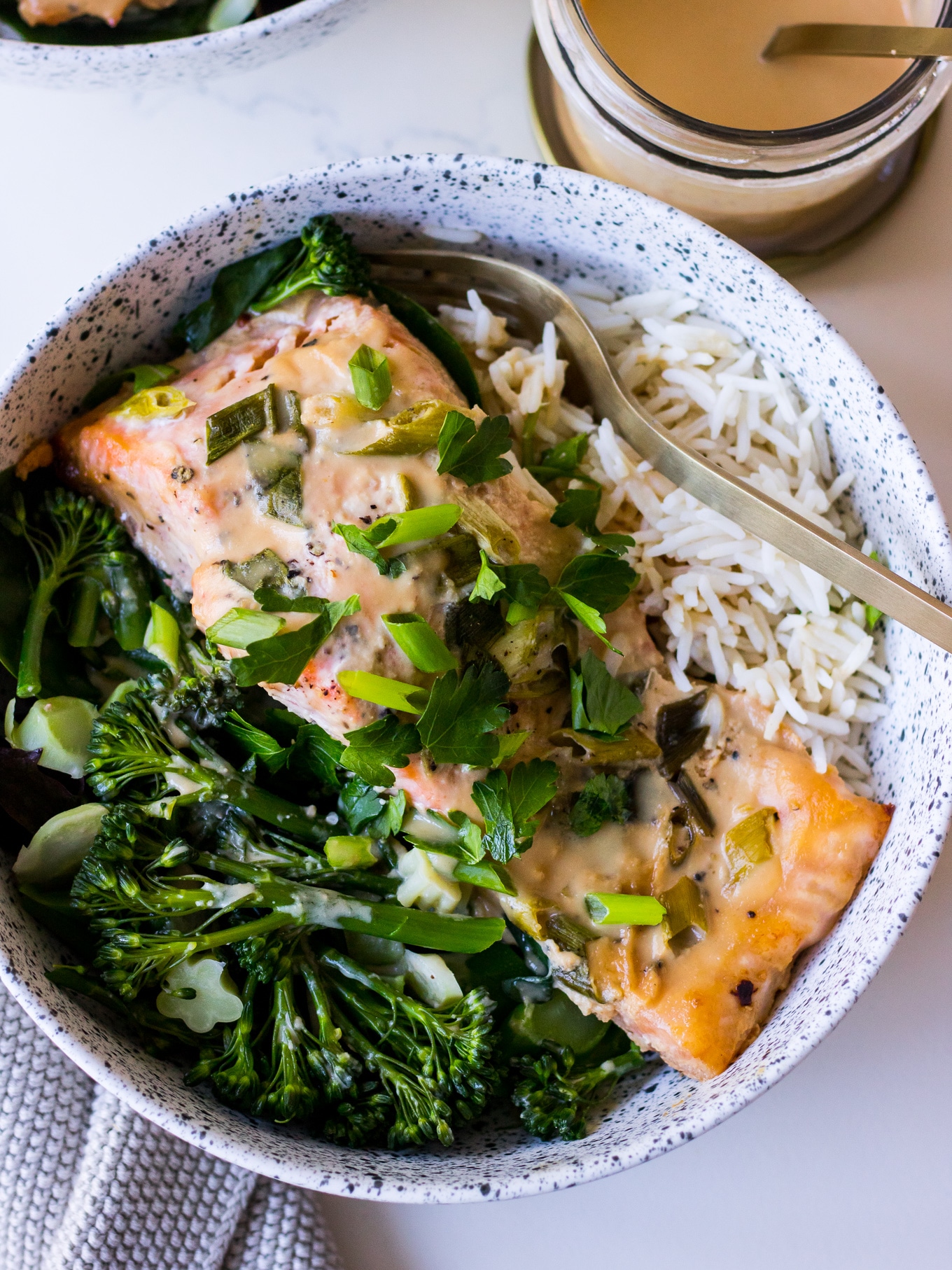
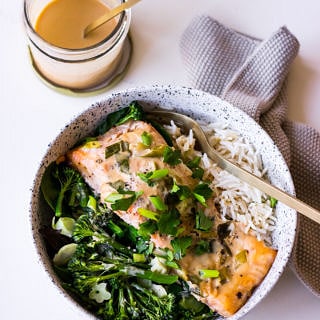
Tahini Miso Salmon
Ingredients
- 1 tbsp white miso paste (shiro miso)
- 1 tbsp hulled tahini
- 1 tbsp apple cider vinegar
- 2 tsp maple syrup
- 2 tbsp water
- 2 spring onions
- 2 fillets salmon
- 1 tsp extra virgin olive oil
- salt and pepper to season
Instructions
- Preheat oven to 180 C. Tear off a large piece of baking paper and place over a baking tray so that you will be able to fold up all the edges together and seal. Optionally, do the same with a piece of aluminium foil as well, and then layer down the foil first, followed by the baking paper (this will be easier to fold up and seal as the foil is more sturdy!)
- In a small bowl whisk together the miso paste, tahini, apple cider vinegar, maple syrup and water. Finely chop the spring onions.
- Rub the teaspoon of olive oil over the baking paper where you are going to place the salmon (just to ensure it won't stick at all). Place salmon (skin side down if skin is still on) on top of the baking paper. Pour about 1/2 to 2/3 of the sauce over the salmon and spread across the top. Sprinkle over 1 finely chopped spring onion and some cracked pepper.
- Wrap the edges of the foil/baking paper together to form a sealed pouch with the salmon inside. Bake for approximately 20-25 minutes or until the salmon is just cooked through – cooking time will vary depending on thickness of the fillets.
- While the salmon is baking add a splash of extra water to the remaining sauce and whisk to thin it out a little. This is the dressing for the finished dish.
- Serve the salmon with rice, steamed greens, the extra chopped spring onion and tahini miso dressing.
Notes
Nutrition
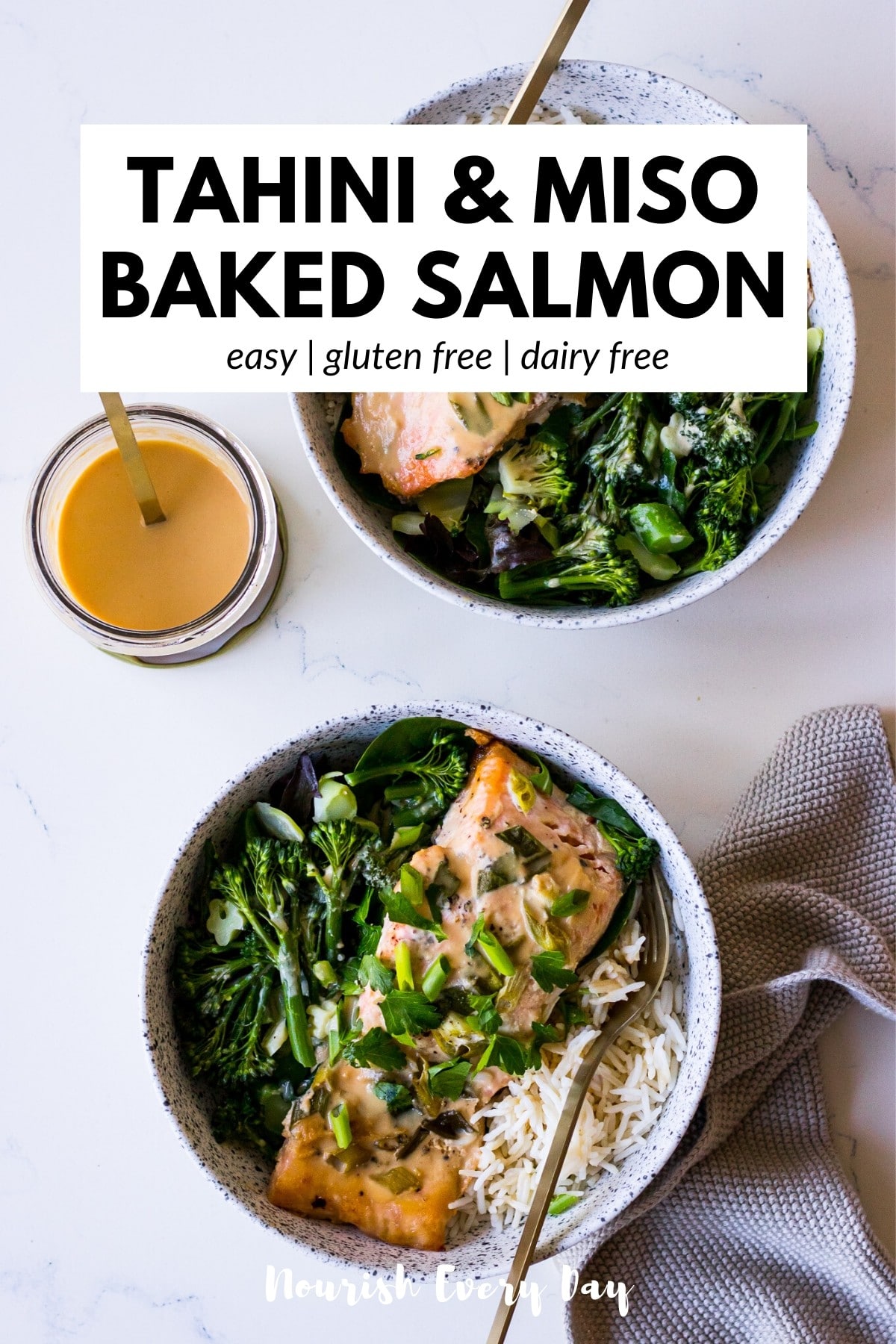

Leave a Reply